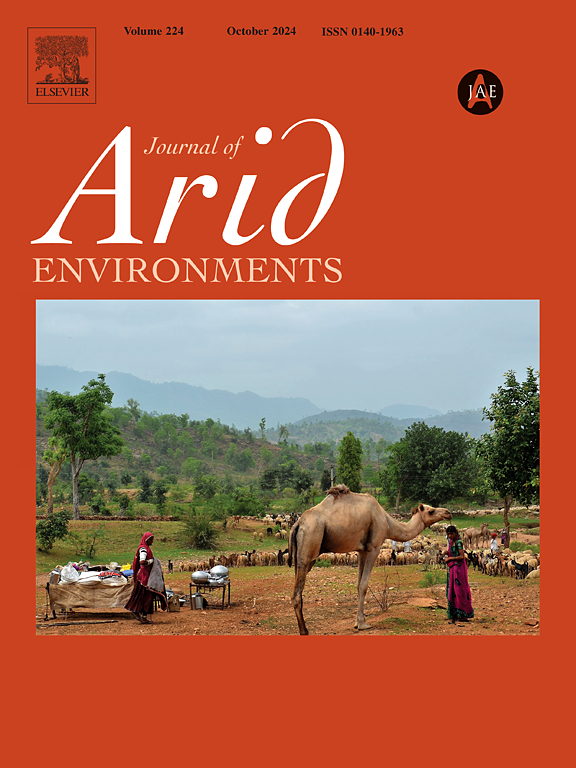Biomass allocation and resource use strategies of shrubs and dwarf shrubs in Southern Patagonia: implications for developing a natural capital accounting framework
IF 2.5
3区 环境科学与生态学
Q2 ECOLOGY
引用次数: 0
Abstract
In situ measurements were made to gain insight into resource use strategies of the perennial flora of cold arid steppe in Southern Patagonia. We measured biomass allocation and nutrient concentration in 3 tall shrub and 3 dwarf-shrub species corresponding to two sizes (small and large plants). Total biomass of individual plants was mainly determined by functional group and species and ranged from 45 for small Nassauvia ulicina to 9630 g dry matter plant−1 for large Mulguraea tridens shrubs. Specific Leaf Area in tall shrubs (6.5 m2 kg−1 DM) was lower than in dwarf shrubs (10.7 m2 kg−1 DM). Leaf nutrient concentrations and reabsorption were variable in terms of correlation to SLA. There was a tendency for the tall shrubs to allocate a relatively high percentage of biomass to the leaf mass fraction. The perennials of the steppe in southern Patagonia have evolved a diverse range of functional traits to adapt to adversity. Based on this admittedly small sample we conclude that tall shrubs have evolved a stress tolerance strategy whereas dwarf shrubs have evolved an acquisitive/avoidance strategy in response to the same selection pressures. We briefly discuss how such baseline information could be integrated into a natural capital accounting framework.
南巴塔哥尼亚灌木和矮灌木的生物量分配和资源利用策略:对开发自然资本核算框架的影响
为了解南巴塔哥尼亚寒冷干旱草原多年生植物区系的资源利用策略,进行了原位测量。我们测量了3种高灌木和3种矮灌木的生物量分配和养分浓度,它们对应于2种大小(小植物和大植物)。单株总生物量主要由功能群和种类决定,其变化范围为:小茅属(Nassauvia ulicina)为45 g,大茅属灌木(mulguaea tridens)为9630 g。高灌木比叶面积(6.5 m2 kg−1 DM)低于矮灌木比叶面积(10.7 m2 kg−1 DM)。叶片养分浓度和重吸收与叶片生长速率的相关性是可变的。高灌木有将较高比例的生物量分配给叶质量分数的趋势。巴塔哥尼亚南部草原的多年生植物已经进化出一系列不同的功能特征来适应逆境。基于这个公认的小样本,我们得出结论,高灌木进化出了一种耐受性策略,而矮灌木进化出了一种获取/回避策略,以应对相同的选择压力。我们简要讨论了如何将这些基线信息整合到自然资本会计框架中。
本文章由计算机程序翻译,如有差异,请以英文原文为准。
求助全文
约1分钟内获得全文
求助全文
来源期刊

Journal of Arid Environments
环境科学-环境科学
CiteScore
5.70
自引率
3.70%
发文量
144
审稿时长
55 days
期刊介绍:
The Journal of Arid Environments is an international journal publishing original scientific and technical research articles on physical, biological and cultural aspects of arid, semi-arid, and desert environments. As a forum of multi-disciplinary and interdisciplinary dialogue it addresses research on all aspects of arid environments and their past, present and future use.
 求助内容:
求助内容: 应助结果提醒方式:
应助结果提醒方式:


